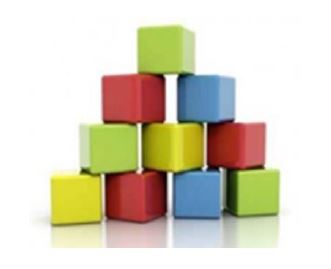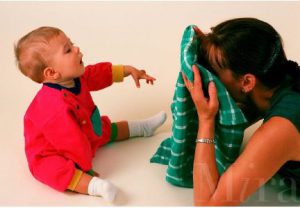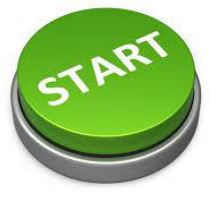

A People Game is any routine or activity that involves interacting with another person. People Games help our child to see that interacting with you is fun.
We have already thought about the importance of ‘watch and notice’ and ‘wait expectantly’- you can practice this when playing People Games too. After you have played the games many time, your child will start to anticipate what is coming next. When you wait at the end of each turn in the People Game, you are giving your child the opportunity to show that they want another turn. Remember to use that excited, expectant face and look out for all the ways your child might be communicating with you.
As you both take turns, you are creating a back and forth interaction- this helps your child to communicate with you for longer and to learnt the first steps about having a conversation. You’re getting that see-saw of communication going.
You can practice Watch and Notice, and Wait expectantly when you play People Games!
The earliest kind of play involves interacting with other people in simple routines called ‘People Games’. A People Game is just playing with a person rather than playing with a toy eg:
 Peekaboo
Peekaboo
Pat-a-cake
Tickle chase
These games begin with you noticing what your child is interested in and following their lead. It might be you imitating an action or sound your child makes or it might be you repeating something that you notice made your child giggle. The important thing is that you take your lead from them. The People Game will help your child see that playing with you is fun. However, they learn much more too.
Let us see what your child learns through a peekaboo game.
If you pull a blanket over your head, then pull it off, and say ‘BOO’ you have the start of a people game.
After you have played it many times your child will expect what is coming next
When you WAIT at the end of the game, you give them a chance to ‘tell’ you to put the blanket back up. This might be through a look, a sound, a smile, or a body movement or words. He is sending you a clear message and taking a turn in the game!
As both you and your child take turns in the game, back and forward, you are helping him to communicate and to learn the basic rules of conversation.
Some more People Games to try
Bubbles
Let us see what your child learns through bubbles.
To start the game, hold the bubbles where your child can see you, with an exaggerated face, and say “ready steady….blow”. Then blow the bubbles. Model words like “bubbles” “pop” etc as they burst.
After you have played it many times your child will expect what is coming next.
When you WAIT at the end of the game, you give them a chance to ‘tell’ you to blow the bubbles again. This might be through a look, a sound, a smile, or a body movement or words. He is sending you a clear message and taking a turn in the game!
As both you and your child take turns in the game, back and forward, you are helping him to communicate and to learn the basic rules of conversation.
Chase game
Let us see what your child learns through chasing games.
If your child likes to run, you can make it into a people game by chasing them saying “I’m going to get you” with an excited tone.
Then catch them saying “got you” and tickle/twirl/squeeze them.
After you have played it many times your child will expect what is coming next.
When you WAIT at the end of the game, you give them a chance to ‘tell’ you to chase him again. This might be through a look, a sound, a smile, or a body movement or words. He is sending you a clear message and taking a turn in the game!
As both you and your child take turns in the game, back and forward, you are helping him to communicate and to learn the basic rules of conversation.
Action rhymes
Choose a song that has a short, simple action you can do with your child e.g. row row row your boat, horsie horsie, round and round the garden, ring a ring a rosies.
Let us see what your child learns through interactive action rhymes.
To start the game, sing the action song slowly using the action to involve your child e.g. bouncing them on your knee for horsie horsie.
After you have sung it many times your child will expect what is coming next.
When you WAIT at the end of the song (one verse), you give them a chance to ‘tell’ you to sing the song again. This might be through a look, a sound, a smile, or a body movement or words. He is sending you a clear message and taking a turn in the game!
Session E Video: https://view.pagetiger.com/sure-start-building-blocks-for-communication/1
Video Script
People Games are a perfect way for babies to practice turn taking conversations.
Jacob’s brain is making important connections every time he takes a turn with Mum.
These connections will help his brain learn about how language works, but also about his mum’s love for him, and that he can depend on her.
Jacob is having a joke with his mum. He understands that his turn is to kick his legs, and mum gives him time to do this before she repeats her part in the game (Mum says ‘don’t you kick mummy……. don’t you kick mummy………….who are you kicking?’).




